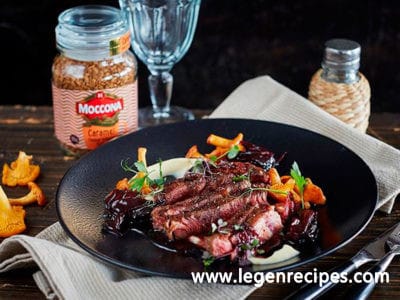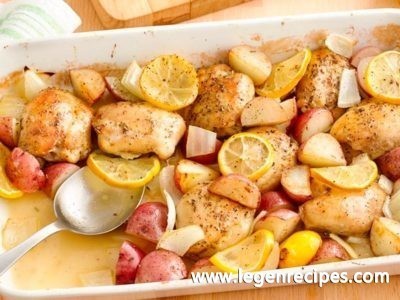Orange
Orange – the fruit of the orange tree (Citrus sinensis). Hard to believe, but historically orange is a hybrid of mandarin (Citrus reticulata) and pomelo (Citrus maxima). However, he appeared so long ago, is now its hybrid origin and no one remembers known that oranges cultivated in China more for 2,5 thousand years BC.
Orange is a round citrus fruit with orange peel, sometimes with red veins. The pulp had sour, light or orange (orange-y Korol’kov) is dark red in color and divided into slices. There are oranges with seeds, and without them.
The origin of the Russian word orange and orange French is not clear. Some suggest that the word orange comes from the French the same word or – «gold», others – that of the Persian-Arabic word naerang – «bitter taste.” There is a kind of Russian version of the origin of the word “orange.” Portuguese sailors called it “Chinese apple.” In Russia oranges were from the Netherlands, in Dutch “apple» – appel, «China» – sien. So it happened – orange.
In Europe oranges appeared in the XV century; they were brought from the East Genoese or Portuguese merchants. In the XVI century in Central Europe it was considered fashionable to plant orange trees in the so-called greenhouses (the word “greenhouse”, of course, comes from the orange). For centuries oranges remained in Europe rare, exotic fruits. These fruits are converted to either candied or used primarily for the table. They are presenting a gift, especially the sick, with the donor is a person oranges refined and non-poor.
Oranges are fruits with high content of vitamins, especially C, B1 and P, so their use prevents the development of vitamin A deficiency. The oranges are up to 12% of sugars, organic acids (0.6-2% of citric acid), a large amount of pectin (12% of pulp and 16% in the outer layer of skin and up to 30% in the inner layer peel). Mineral substances prevail calcium, potassium, phosphorus, there is little iodine. Orange – supplier Inositol (vitamin B8) which regulates lipid metabolism in the organism, lowers cholesterol, reduces vasospasms, normalizes bowel motility, helps to eliminate toxins. Orange nizkokalorien (41 kcal per 100 grams).
The types and grades
Ordinary, they are also delicious light (blondes fines on French classification). They occur always sold in any Russian store. Vary the shape (round or slightly elongated), size (from small to large), taste and color. Bones are usually present, sometimes in large quantities. The pulp is usually yellow, often with a hint of orange. There may be a very juicy and rather dry, as the sour and sweet and sour. For ordinary oranges are, for example, varieties:
- Salyustiana (Salustiana, Spain and Morocco) – round or slightly flattened, peel tender, very juicy pulp;
- Shamuti (Samouti, Israel) – large, oval, rough peel, the pulp is juicy and flavorful;
- Valencia, Valencia aka Leith (Late Valencia, Valencia Late, just as Spain, Morocco, Israel, Uruguay, Argentina, South Africa) – round, smooth peel, myakost light orange, juicy, slightly sour;
Hamlin (Hamlin) – distributed in Florida, dwarf, often grown in the home; - Kadanera (Cadanera) – seedless orange, launched in Spain, is widespread in Morocco and Algeria; it also sold under the names Cadena final, Cadena dzhueso, prekoke de Valencia, prekoke Kanares de Valencia San pepins (Valencia seedless);
- Calabrese Calabrese or oval (Calabrese Ovale) – grows in Italy, in Calabria;
- Domestic varieties firstborn
Grade better Sukhumi, also bred by Soviet breeders;
Balta (Pakistan); - Belladonna (Belladonna, Italy);
- Bern (Berna) – is grown mainly in Spain
- Biondo commune (Biondo Comune) – widely grown in the Mediterranean basin, particularly in North Africa and Egypt, Greece, Italy and Spain, also known under the names Koines, Liscio, Beledi, Nostrale;
- Biondo Riccio (Biondo Riccio, Italy);
- Carvalhal (Carvalhal, Portugal)
- Castellana (Castellana, Spain)
- Klanor (Clanor, South Africa)
- Don Joao (Dom João, Portugal)
- Fukuhara (Fukuhara, Japan)
- Gardner (Gardner, Florida)
- Homosassa, gomosassa (Homosassa, FL)
- Jincheng (Jincheng, China)
- Joppa (Joppa, South Africa, Texas)
- Hettmali (Khettmali, Israel, Lebanon)
- Kona (Kona), a type of Valencia, bred in Hawaii
SHM Liu Hong (Lue Gim Gong, Florida), and a variety of Valencia - Maketera (Macetera, Spain)
- Malta (Malta, Pakistan)
- Maltaise Blondet, a white Maltese (Maltaise Blonde, North Africa)
- Altaise Ovale:
- Maltaise oval (Maltaise Ovale, South Africa), also known as Gary (Garey’s), and the California Mediterranean Sweet (California Mediterranean Sweet)
- Marrs (Marrs, California, Iran, Texas) with a relatively low acidity
- IDEA (Midsweet, Florida)
- Narine (Narinja, South India)
- Parson Brown (Florida, Mexico, Turkey), the fruits are round, medium in size, contain 10-30 seeds, rind and juice is not too bright; it is the earliest of oranges in the United States (ripen in early September in Texas, since the beginning of October to January in Florida;
- Feather (Brazil);
- Pen Coroa (Pera Coroa, Brazil);
- Pen Natal (Pera Natal, Brazil);
- Rio pen (Pera Rio, Brazil);
- Pineapple, pineapple (Pineapple, North and South America, India);
- Prime (Pineapple, South Africa)
- Ed genus (Rhode Red), a variant of Valencia, juicier and less acidic
- Roble (Roble, Florida), is of Spanish origin, is very sweet
Queen, Queen (Queen, South Africa) - Satgudi (Sathgudi, South India)
- Selety (Seleta), also known as Selecta (Selecta, Australia, Brazil), a rather sour shamuti Masri (Shamouti Masry, Egypt), the option shamuti
- Sunstar (Sunstar, Florida)
- Tomango (Tomango, South Africa)
- True (Verna, Algeria, Morocco, Mexico, Spain)
- Vitsieda (Vicieda, Algeria, Morocco, Spain)
- Westin (Westin, Brazil)
- Temprana Valencia (Valencia Temprana, from Spain)
A variety of conventional sugar called oranges oranges, which are sometimes classified as a separate group. Very often, they have a direct similarity to the ordinary varieties of oranges. It is the fruit of a very low acid content. Among the varieties of sugar:
- Vanilla Sanguinius (Vainiglia Sanguigno, Italy) – the pink flesh of the fetus, but it does not belong to oranges-wren (see. below), because it takes part in pigmentation carotenoid pigment lycopene and anthocyanin is not, as in Korol’kov;
- Shamuti Meski (Shamouti Meski, Middle East) – acid-free form of orange shamuti;
- Mozambi (Mosambi) – grows in India and Pakistan, some deflating.
In a separate group often makes yaffro and oranges, Jaffa oranges, which are collected in Israel from December to May. This large fruit with thick lumpy skin, very sweet and juicy.
Wren (sanguines on French classification) – with the blood-red flesh, small, very sweet. Wrens come from Italy, the island of Sicily. Now, however, they are grown in other countries, including the US, Spain, Morocco, Tunisia. The fruit is usually a medium-sized, orange peel, sometimes reddish or reddish spots. Seed they typically do not. The flesh is juicy, its color – from red to blood red and maroon. Sometimes the flesh is orange or yellowish with red veins. Flesh color is due to the presence of large amounts of anthocyanin (are antioxidants, reducing the risk of many diseases, including cardiovascular). The blood orange is rich in iron and vitamins (usually larger than their fellow orange). Among the varieties:
- Moro (Moro, Italy) – the fruit of medium size, round, with a slight tendency to oval, rough peel, juicy myakost;
- Double fin (Double Fine, Italy, Spain, Morocco) – large fruit, peel thin, the flesh is bright red, juicy;
- Maltese (Maltaise, Malta, Tunisia) – fruits almost round, with a slight tendency to oval, red peel, the pulp is bright red or red-purple veins, very juicy, sour;
- Tarokko (Tarocco, Italy) – fruits rather large, pear-shaped, smooth peel, the pulp is fleshy, juicy enough.
- Sangvinello commune (Sanguinello Comune, Italy) – a medium-sized fruit, seeds, little or no peel orange red, medium thickness, moderately hard, flesh dark red, juicy, aromatic;
- Sangvinello Moscato (Sanguinello Moscato, Italy) – grows on the slopes of Mount Etna in Sicily, which is one of the main varieties; Some other varieties sangvinello – Sanguinello Moscato Nucellare 49-5-3, Sanguinello Moscato Nucellare 49-5-5, Sanguinello Moscato di Cuscunà;
- Sangvinello pinyu (Sanguinello Pignu, Italy) – has some traits of other varieties Sanguinello, but not much, and the grounds of belonging to a group of several questionable. In most fruits are not fully red, and red spots on the peel and in the flesh. Perhaps the variety is derived from ordinary oranges.
- Sangvinelli (Sanguinelli, Spain)
- Doblefina (Doblefina)
- Sanguinius Washington (Washington Sanguine), derived from doblefiny.
Grown in Sicily orange varieties Moro, tarokko sangvinello and groups (except Sanguinello Pignu) protected geographical names Sicilian blood oranges (Arancia rossa di Sicilia) with the status of IGP – Indicazione geografica protetta.
How to cook
Fruits orange used fresh and for making beverages. They put in fruit salads and desserts. From oranges prepare jams and preserves.
Oranges are often put in the main dishes. It is appropriate to look next to the bird (duck with oranges).
Orange peel is used as a substitute of orange peel in the preparation of various pharmaceuticals, infusions, syrups, extracts and the food industry.
From orange peel orange oil is obtained.
Season
Season oranges vary in different countries; In addition, different varieties keep up at different times. In the north hemisphere oranges harvested mainly from November to March (although depending on the terrain and the orange crop varieties can be harvested in September-October or even in April and May).
In the Southern Hemisphere (particularly in Argentina, Brazil, Peru, South Africa) oranges ripen in the months corresponding to our summer.
How to choose and store
When choosing an orange in the store and on the market the first thing you should pay attention to its variety: different varieties of oranges are different from each other and the value and richness and acidity. Even if a particular grade to identify and fail, you can always make a choice between the ordinary, navel orange or orange-wren.
It is necessary to pay attention to the weight and size of the fetus. Generally, the heavier the orange, so it will be more sweet. But, at the same time, it is more than the size, the less will be delicious. Therefore, you should choose oranges, small in size, but with great weight. Ripe fruit will always fragrant.
We recommend buying oranges, which were collected during the period from November to December. Learn when fruits were collected, in some cases, it can be a seller in the market.
Oranges imported from Mediterranean countries, are the most delicious. Oranges, imported from Peru and South Africa, are often immature and tear they ripen already in transit – this often affects the taste.
With regard to the skin, then it may not affect the palatability of oranges. Fruits with thick and thin skin can be equally tasty. The only difference is that thick rind is much easier to clean.
As for the color of the peel and pulp of oranges, the rest on this point when choosing not worth it. Firstly, different varieties of different color of skin and flesh. Furthermore, to make the color orange fruit, unfortunately, it can be by various chemical means.
Keep oranges at home as you can in the fridge, and outside of it. At a temperature of 5-10 ° C + in a well-ventilated area oranges prolezhat up to two weeks.
If you want to keep the oranges for a long time (up to 6 months), then wrap each fruit in a paper towel and place in a cellar or other dark and cool room. Watch out for humidity, it should be 80-90%. Shelf considered the orange with a green tinge.




